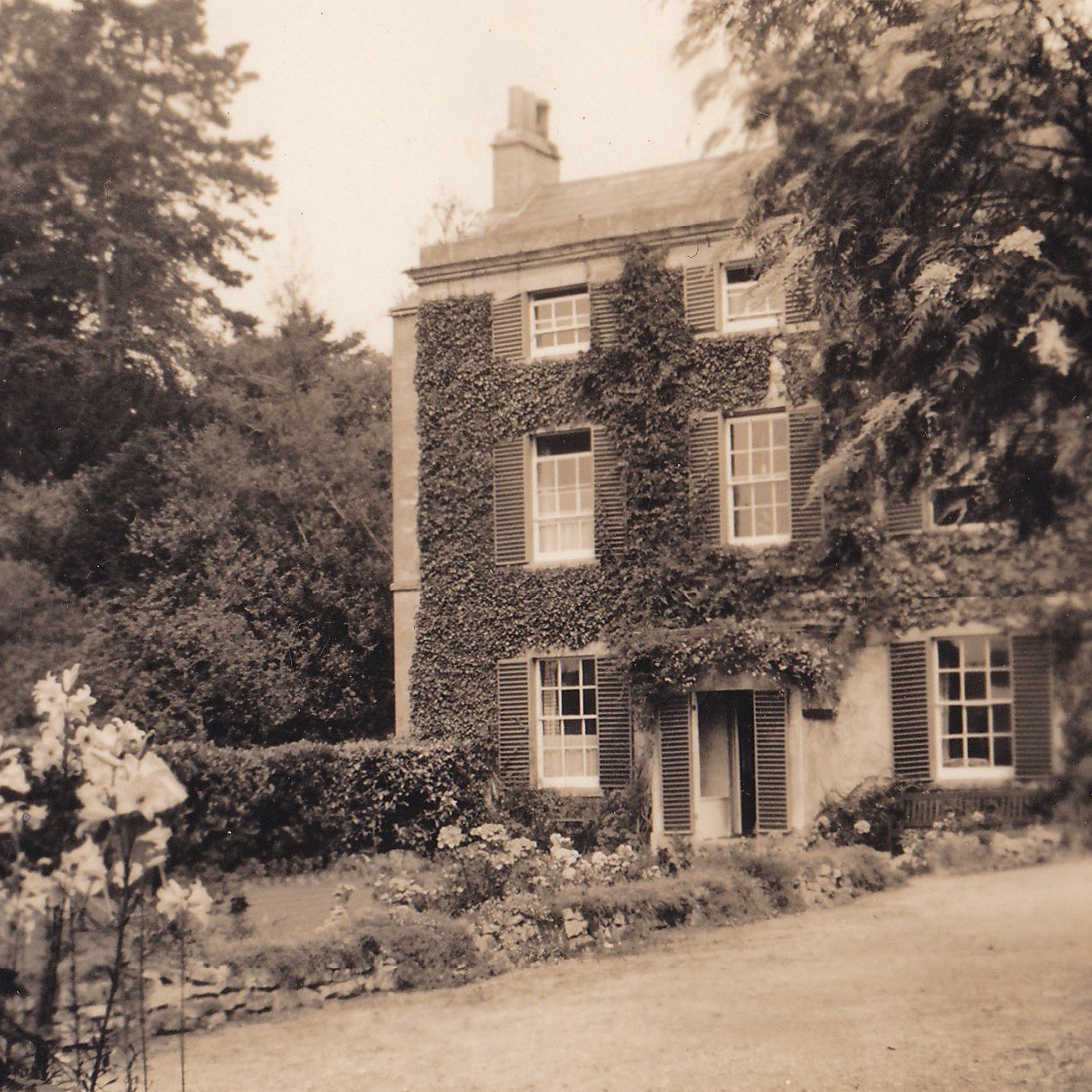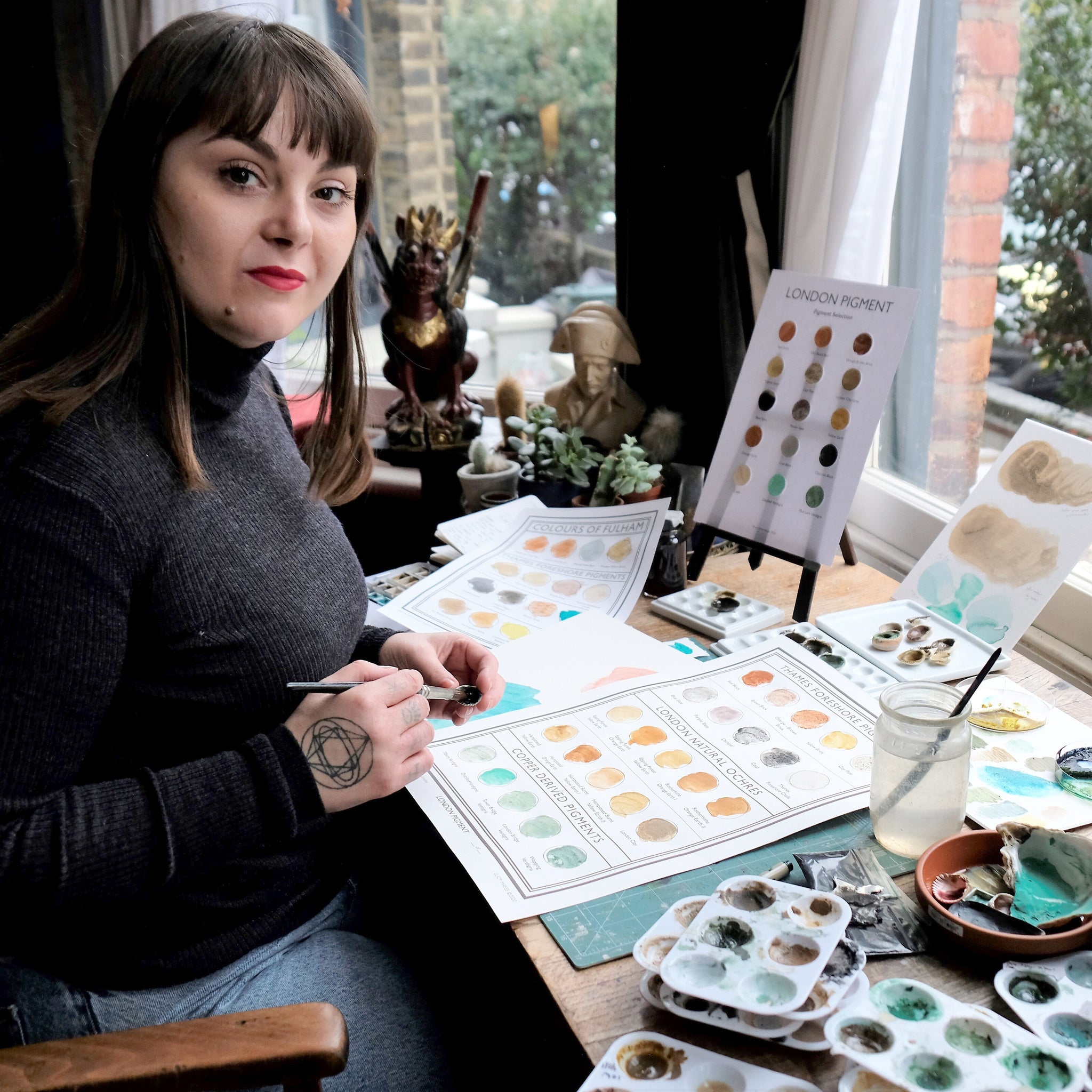Award-winning garden designer, exhibitor and lover of all things interiors, Butter Wakefieldâs career has granted her access to some of the most splendid gardens and homes. Having arrived in London in the late 1980âs, Butterâs first job was with where her love for interiors and design really evolved. Today Butter runs a small offering a unique and personal service to clients. Here she welcomes us into her blossoming garden to share her love of wildflowers, tips for novice gardeners and why planting for pollinators is so important.ÌıÌı
What sparked your passion for gardening and what does gardening mean to you?Ìı
I come from a family of garden enthusiasts â� perhaps it's in my blood! I was surrounded by beautiful gardens growing up in America and my grandfather had the most sensational English-style garden. After moving to the UK and spending many wonderful years working in interior design, I realised that as my family grew, I wanted to work for myself and spend more time outside.Ìı
Gardening is so rewarding. The excitement you feel when something that you've planted from seed grows millimetre by millimetre each day gives me such joy. I am a great observer of the garden because I think that is the key to a healthy, productive one â� just keeping a beady eye on things really does help. It's a great tonic for me to tend to the garden, mow the lawn and observe the uncontrolled chaos that is the wildflower meadow. ±õ³Ùâs good for me to just let it be and relinquish a bit of control.
Tell us about your garden.
In my wildflower meadow, the thing I enjoy most is the coming and goings of flowers. It starts with pink campions and then white daisies, followed by a splattering of buttercups â� these wonderful un-spoilt, humble flowers which I encourage to grow and spread. A wildflower meadow is relatively easy to create as it requires very low-quality soil and sunshine for most of the day. With my clients I always try to encourage them to set aside some lawn space for a wildflower meadow. ±õâm all about planting for pollinators, using nectar rich perennials and grasses to provide bees, butterflies and insects with food throughout the year.ÌıÌı


On my terrace I have an assortment of pots, each planted slightly differently but they all have one plant that runs through them. I have a pyramid of sweet peas and salvias in one. And, in the other two pots, I've got salvias in different colours and Alchemilla Mollis and Nepeta (Catnip). The terrace is also where I have a spot under the Magnolia with a pair of benches and some very plump cushions, making it a lovely shady place to retreat to on a warm afternoon. Comfortable seating is essential for fully enjoying your garden which, of course, Neptune does beautifully. The Harrington chairs, with their plush seat cushions, are great for relaxing in and the woven wicker design feels harmonious with the garden.Ìı
And what plants do you use in the garden alongside your blooming wildflower meadow?
One plant that I find irresistible is Alchemilla Mollis (Ladyâs Mantle). Its velvety green leaves hold the edge of flower beds together and creates a great contrast amongst soil and colourful flowers. Along my borders on opposite sides of the meadow I have clipped, two metre tall, Yew pyramids at regular intervals. These create a lovely structure, allowing the chaos to happen around them, and this repetition really does make a difference to the design.Ìı
 ÌıHow does your garden influence your interior design?
ÌıHow does your garden influence your interior design?
I love to create visual stimuli from all angles, both inside and out. My house is not to everyone's taste, as it is maximalist and there is a lot of stuff on absolutely every surface. I find the rich layering of pattern in fabric, colour and texture really makes me happy. Both inside and outside there's a limited amount of workspace! No dining space, no coffee table space. I often have to shift things around just to make room for a cup of tea.Ìı
You have a very vibrant home, which feels like a reflection of your garden, how do you use colour indoors?
For decorating inside, I think it's as simple as choosing a colour that you really adore and then being bold with it. A house should have an overriding colour theme throughout. For mine, I have black and white everywhere. In the drawing room there are zebra rugs, some black furniture and a black and white ticking sofa. In the hallway I have great checkerboard tiles which run into the kitchen and conservatory (and in different configurations in the bathroom too!), plus a black and white stripe stair runner. It's all tempered with lots of green accents that are peppered throughout the house.Ìı
If youâre worried about colour, start small. For instance, in my drawing room I started by painting the inside of my bookshelves orange to break up the grey. Then, as my confidence grew and taste matured I re-covered two chairs in orange â� one in a divine mohair velvet and another in a bold patterned linen fabric. I love to grow and pick orange tulips to place throughout the house at Easter and throughout the spring. There's always a little bit of room for a bit of pink about the place too, such as my collection of pink Lustreware on shelves and sideboards, and a little flash of yellow that just brings everything alive and feels very welcoming.Ìı
What does a weekend at home look like to you?
±õâm an early riser, so first thing in the morning I wander around the garden in my dressing gown with a mug of coffee, observing the plants and picking flowers for the house. I love the tradition of gathering and arranging a mix of flowers to bring joy and the outside in. ±õâl±ô then take my dog, Wafer, for a walk along the river Thames observing the views across the horizon, which is an act I find deeply calming. Plus, t³ó±ğ°ù±ğâs always something interesting going on there â� the lasers being sailed or people rowing. It's a highway of activity and a real joy.ÌıÌı
If I have time, ±õâl±ô pop to . It's a great source of inspiration and gives me a sense of peace. You can find a very quiet, unbeaten path that offers moments of privacy and reflection. And then after that ¾±³Ùâs an afternoon in the garden, a lot of my time is spent actually tending it, mowing the lawn, deadheading, planting, pricking out, all those simple mindful things.Ìı
What's the one most important piece of advice you would give to garden novices?
Understand how the light travels across the garden. See where the morning and afternoon sun falls, and where shade is needed during the summer months. Light and aspect are some of the first things that need to be considered.ÌıÌı
If youâre a morning person and you like to sit in the sunshine with a coffee, make sure you've got a little area for a bistro table or sofa, like Neptuneâs classic Cheltenham collection, in that pocket of morning sunshine so you can truly enjoy those moments. Or, if you prefer entertaining in the evening, make sure that your terrace captures the last rays of evening light.Ìı
Butter Wakefield's top gardening tipsÌı
Ìı
1. Observe and plan
Don't make any hasty decisions. Watch the garden for a year and see what is in there, what you like the look of and what you don't. Make notes ready for planting.Ìı
2. Start with structure
Assess what hard landscaping is needed, choosing materials that complement decor and architecture inside and outside of the house, and what seating areas are required. Consider enhancing your privacy with trellis and trees. Then work your way down to ground level with the different layers of climbers, shrubs, perennials and grasses.ÌıÌı
Ìı
3. Repetition is key
I suggest using one plant a lot. I think rhythm and repetition really helps to create a beautiful design, and it helps the eye travel from one little moment to the next. For instance I have Hydrangea Annabelle down both sides of my borders and they work equally well in shade and sun.Ìı
Ìı
4. Plant a tree
Every garden needs at least one tree, even if it's in a pot. It creates shade in the summer months and privacy all year.ÌıÌıÌı
Ìı
5. Maintain your garden
During the summer months ¾±³Ùâs all about maintaining the garden with watering when required and deadheading. Also, take time to watch wha³Ùâs progressing and make notes on gaps too.ÌıÌı
Ìı
6. Prepare for the year ahead
In autumn, move anything that needs to be relocated and prune plants that have outgrown their space, but really try to leave us much standing and undisturbed as possible for wildlife to shelter in over winter. Where youâve identified gaps, you can also order your bulbs and plan where youâll be planting.Ìı
Ìı
Feeling inspired by Butter Wakefield's blossoming garden? From outdoor garden sets to wicker planters,Ìıshop the edit to get the look. Follow if you're looking for more inspiration on how to create a vibrant garden or home.
]]>








































































 ÌıHow does your garden influence your interior design?
ÌıHow does your garden influence your interior design?


































 Ìı
Ìı







